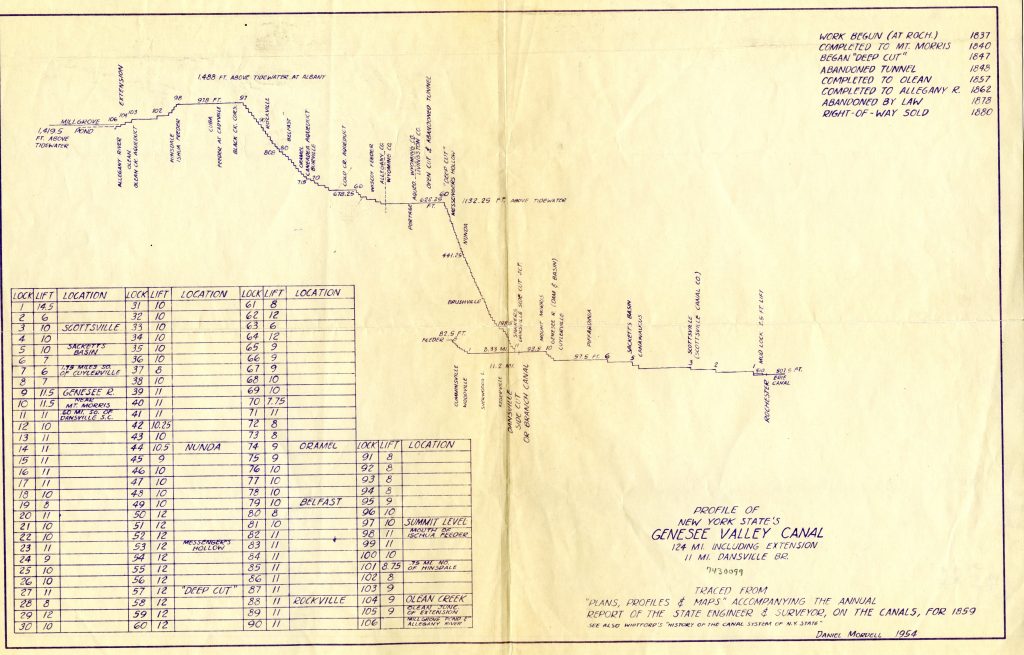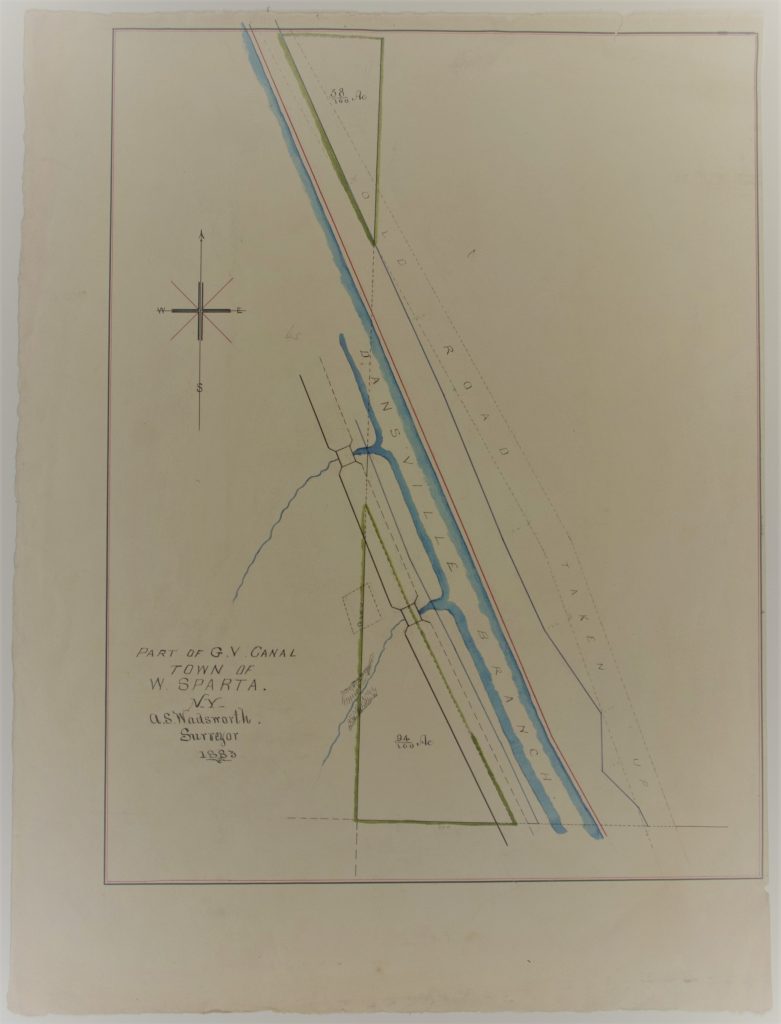“Descending from Brooks Grove into the valley, I again struck upon, and crossed the Genesee Valley Canal – a work which will illustrate the power, if not the wisdom of our noble State – because whoever shall pass along its course, after its completion, will not be slow to admit that such a victory over such obstacles, has not often been accomplished in the history of human enterprise” (Stone 3).
In May 1836, New York State authorized the construction of the Genesee Valley Canal, embarking on a feat that would take four years and a tremendous amount of workers, raw materials, and engineering ingenuity. Stone writes of the building of the canal as a “victory over such obstacles” of the Earth, but all along the canal path it is obvious that the feat was not necessarily a story of man conquering nature, but more of one that showcases the working together of man and Earth in addition to emphasizing the temporal quality of humanity in contrast to the everlasting nature of the Earth.
The route of the canal was to follow the Genesee River one hundred and six miles from Rochester to Olean, with an eleven mile branch extending to Dansville. The engineering of the canal was relatively smooth sailing for the first thirty-six miles until the canal gets to Mount Morris, NY and the landscape began to immensely challenge the engineers and workers. For example, the Report of the Canal Board states of the fifty miles in between Mount Morris and the summit: “The lockage of the whole canal, is 1,063 feet,… and of this amount 889 feet is contained on the middle division… The cost of the whole canal is estimated by the Canal Commissioners in their recent report at $4,585,602.36; and of this amount, $2,928,046 is the cost of the middle division” (2).
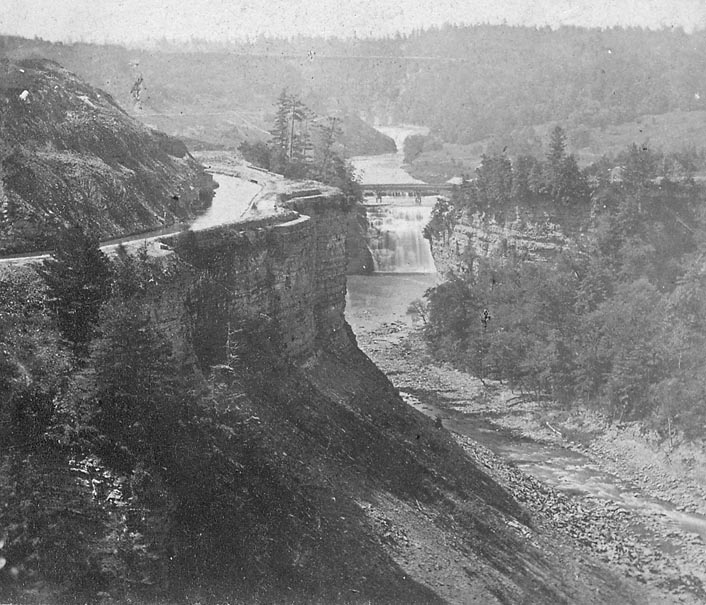
Fig 3. Canal alongside Upper Falls of Letchworth State Park. Photograph courtesy of Letchworth Park History webpage.
This section of the canal crosses through Letchworth State Park, where the canal faced its biggest problem of crossing over the Genesee River and creating the Portage Tunnel. Here is where perhaps the biggest struggle between nature and humanity ensued as engineers attempted to build an aqueduct crossing the rapids of the Genesee River and drill a tunnel through the cliffs of Letchworth. The aqueduct was completed, despite worries about the rapids sweeping it away or ice or driftwood floating down causing damage to it; however, the continual collapsing of the Portage Tunnel led to many deaths of workers and prevented its completion. Today, the remains of the tunnel now are home to over two thousand bats, giving this abandoned tunnel an eerie presence in both its past life and its present one.
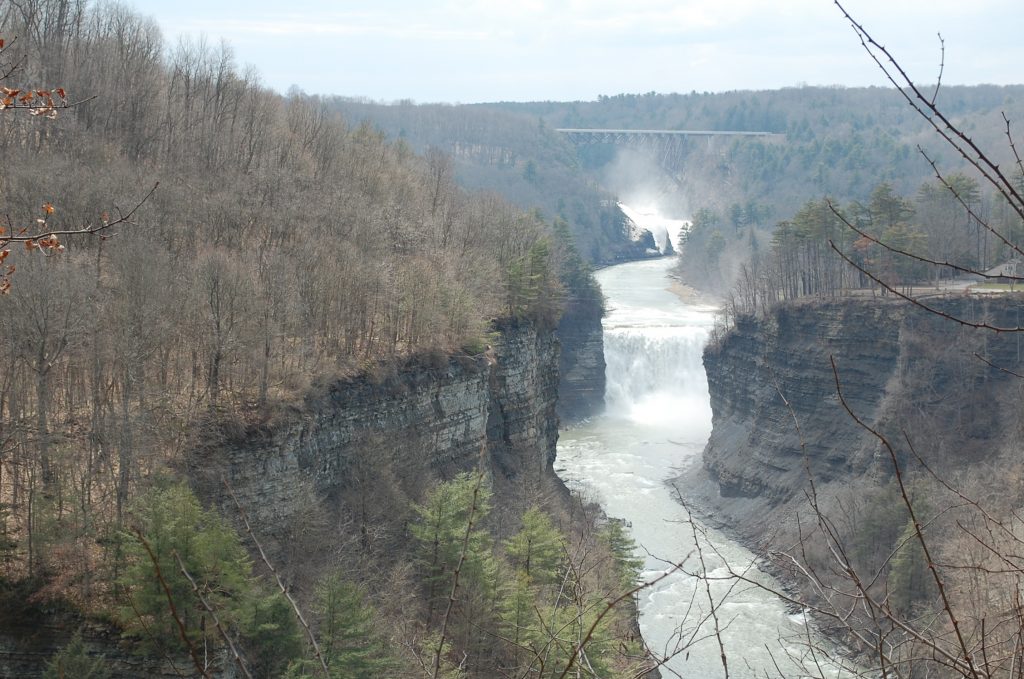
Visiting Letchworth Park today, the marks of the canal have faded from view and one no longer is amazed at the engineering feats of man and the boats cruising along the sides of this cliff, hugging the edge willing itself not to fall into the rapids of the Genesee below. However, the view still inspires the same feelings of awe as one stares down into the rapids of the Genesee as they cascade over rocks and crash into the river below, billowing up flumes of mist.
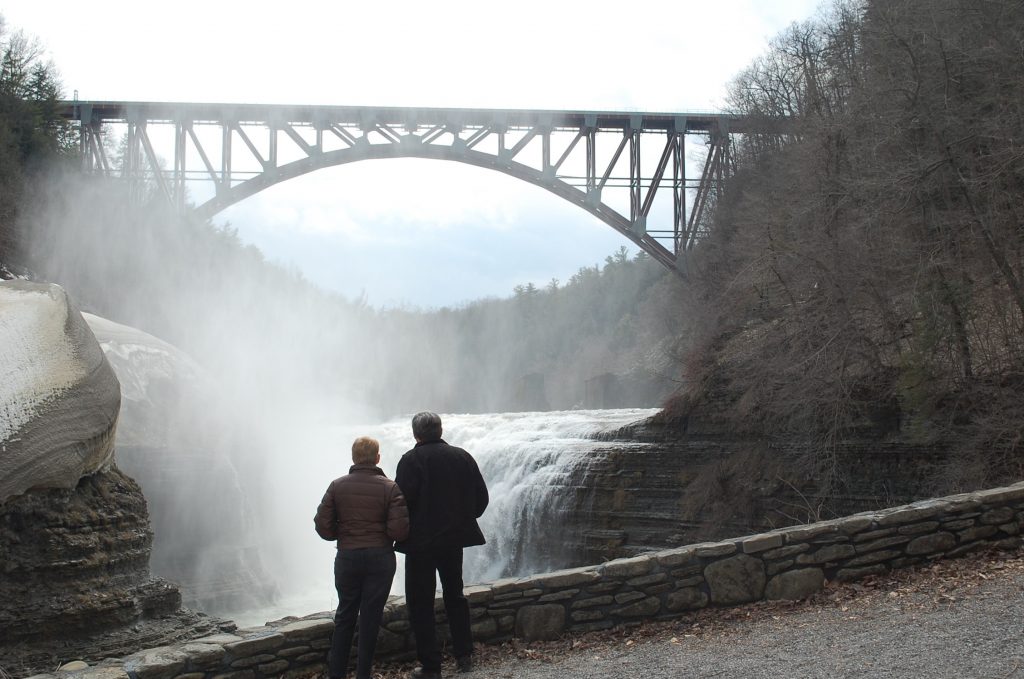
Parts of Letchworth State Park today emphasize the working together of the Earth and man. Staring upon the miraculous falls, and the newly renovated railroad bridge that spans over the top of them, some might think that this harsh metal manmade fixture seems to dampen the intensity of the natural wonders that are beneath it, but there is something wonderful that occurs looking upon both of them. In one viewpoint, one can look out and see the intertwining of Earthly splendor and manmade grandiosity and ingenuity, resulting in the supreme contemplation and appreciation of the Earth and its beings.
Sources:
State of New York. Report of the Canal Board : in answer to the resolution of the Assembly of April 12, 1839 in relation to the Genesee valley canal. No. 376 In Assembly April 16, 1839. Albany: State of New York. Print.
Stone, William L. “Rambles in midsummer.” New York Commercial Advertiser 1840: 3. Print.
Images:
Fig 1. Mordell, Daniel. Profile of New York State’s Genesee Valley Canal: 124 miles including extension 11 miles, Dansville Branch / traced [by] Daniel Mordell. Map. 1954.
Part of GV Canal Town of W. Sparta. Map. 1883. Milne Library, SUNY Geneseo, New York.
Fig 3. “View on the Genesee River near Portage NY.” Letchworth Park History, http://www.letchworthparkhistory.com/lpa%20110.html.
All other images were taken by us personally.
